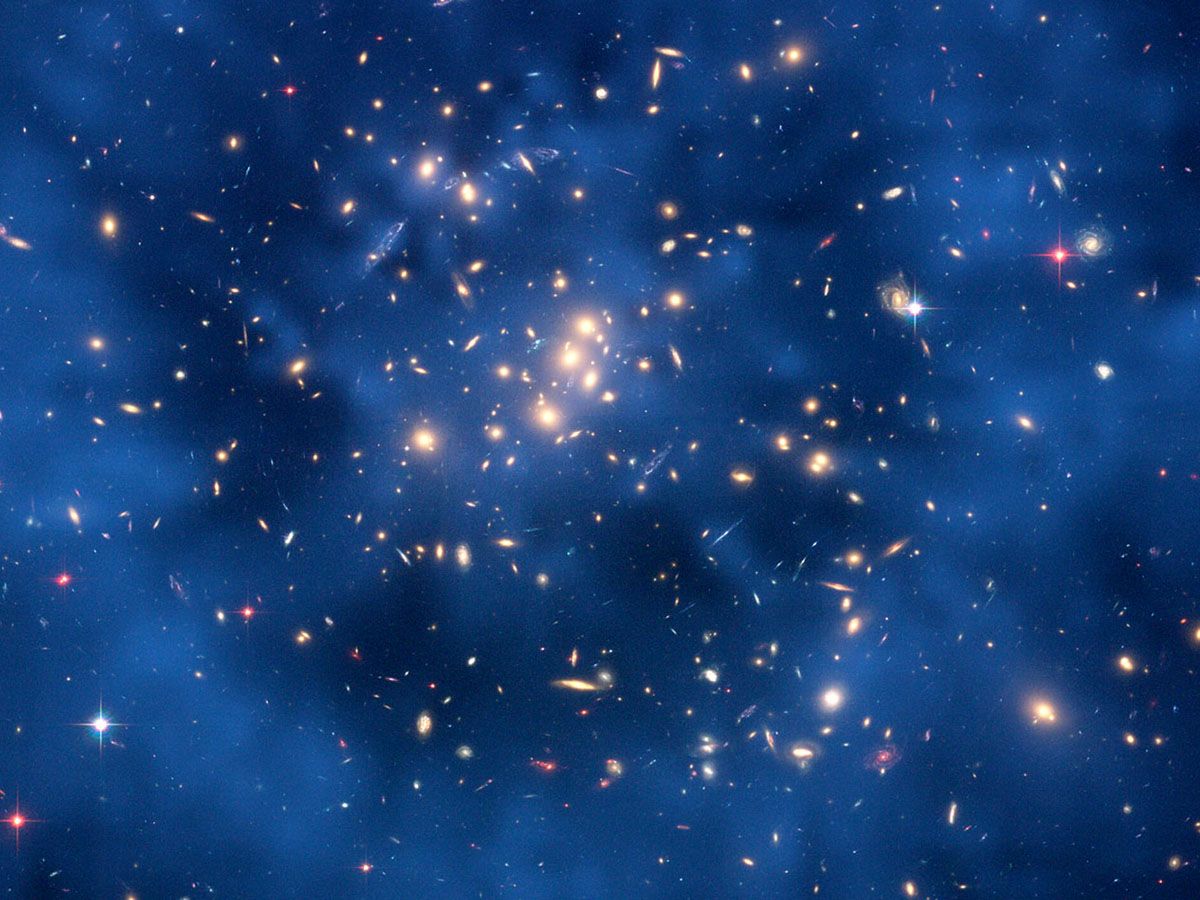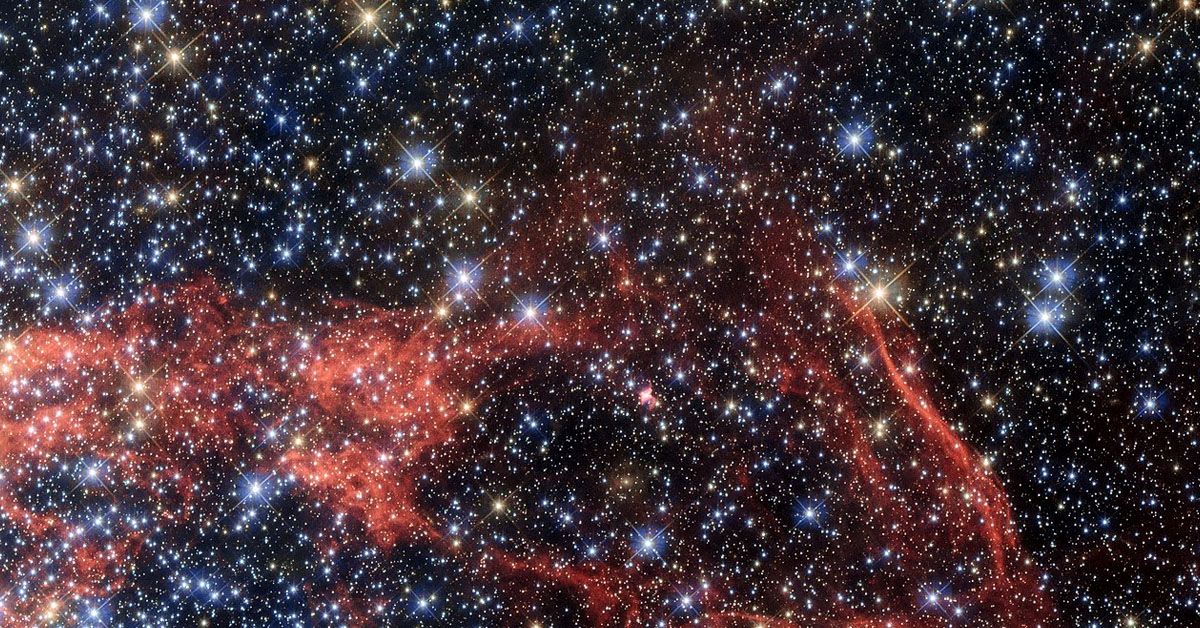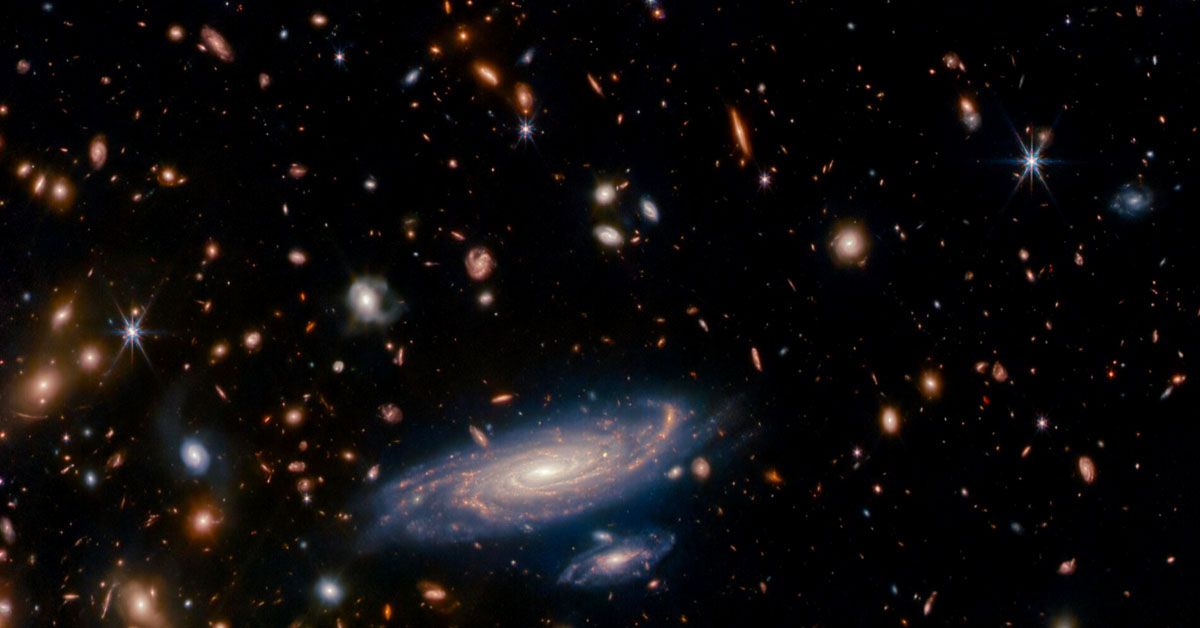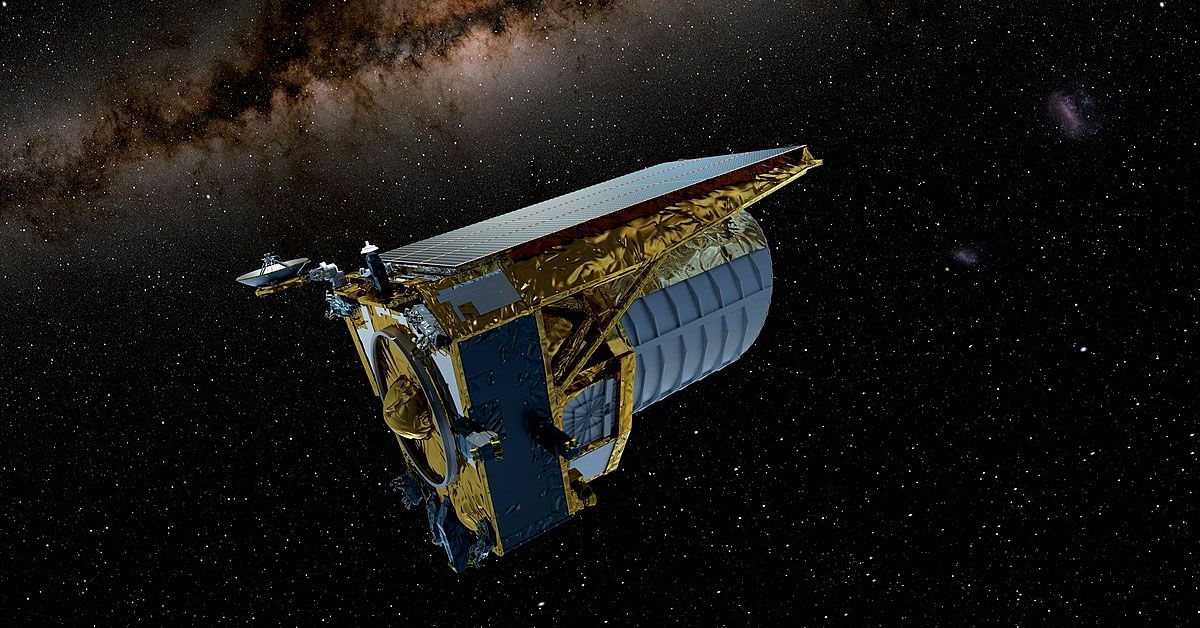Barely a few weeks from now, the curtains will rise on one of the most thrilling dramas in the field of space exploration. Enter Euclid, a European space probe, prepped for a mission with a price tag of a staggering €1 billion.
Its starring role? To delve deep into the cosmic realms and unravel the enigmas of dark energy and dark matter, the elusive elements that rule our universe.
Despite centuries of astronomical advancement, these components remain shrouded in mystery, their nature as mystifying as the day they were discovered.
Pioneered by distinguished scientists from the UK and other countries, this expedition embarks on a quest to comprehend the fundamentals of our cosmos.
What are Dark Energy and Dark Matter?
In the cosmic theater, two lead characters dominate the stage, yet remain hidden behind veils of uncertainty: dark energy and dark matter.
The former, a mysterious force, was unveiled to the world in 1998. It does not just exist, it exercises power, accelerating the expansion of the universe, pushing galaxies farther apart.

On the other hand, dark matter takes on a more substantial role. It is matter, yes, but not the kind we can see or touch. Despite being invisible, it accounts for about 80% of the universe's mass, acting as a cosmic glue that holds galaxies together.
Unlike ordinary matter, they do not interact with light or any other form of electromagnetic radiation, making direct observation impossible. But how do we know they exist if we cannot see them?
The answer lies in their gravitational influence. Astronomers observe their impacts on visible celestial bodies: how galaxies rotate and how light bends as it travels through the universe.
The Euclid Mission Overview
Commissioned at a cost of €1 billion, the Euclid mission is not merely a testament to human ingenuity but also a pursuit of answers to profound cosmic questions. Its primary goal? To comprehend the enigmatic elements of the universe - dark energy and dark matter.
Bearing the namesake of Euclid of Alexandria, the renowned Greek mathematician who laid the foundations of geometry, the Euclid telescope is no less revolutionary.
It boasts a resolving power on par with the legendary Hubble space telescope, a feat that allows it to dissect the vast expanse of the night sky with impeccable precision.
Originally intended for a different launch scenario, geopolitical events led to a course correction, with the mission now scheduled to be launched on a Falcon 9 rocket from SpaceX.
Following its July 1st, 2023 launch, Euclid will embark on a month-long voyage towards its destination, the second Lagrange point (L2), situated 150 million km away from our blue planet.
L2 is a popular location for telescopes, and Euclid will join the company of ESA's Gaia and Webb space telescopes already stationed there. Once in place, Euclid will maintain a halo orbit around L2, kept in sync with Earth's orbit around the Sun.

From its unique position, the telescope will surveil a third of the night sky simultaneously, creating an extraordinarily detailed map of the cosmos.
Outfitted with advanced instruments like the VISible instrument (VIS) and the Near-Infrared Spectrometer and Photometer (NISP), Euclid is primed to probe the mysteries of the universe.
The spacecraft is designed for a nominal mission lifetime of six years, but this could be extended based on the available cold gas for propulsion.
How do You Study Something You Can't See?
This is the challenge the Euclid mission seeks to surmount as it embarks on its quest to explore dark matter. The mission's secret weapon in this pursuit is a natural cosmic phenomenon known as gravitational lensing.
To understand gravitational lensing, picture a cosmic game of billiards. Instead of balls, you have light from distant galaxies. As this light travels towards us, it encounters dark matter, which, due to its mass, bends the trajectory of the light, much like a cue ball diverting another on the billiard table.

Euclid will capture these distorted images, reading the signs and signals encrypted in this cosmic ballet. The amount of bending allows astronomers to map the unseen matter causing the distortion.
To decode the nature of dark energy, Euclid will turn its gaze far into the universe, peering back into time to examine the universe's expansion over the past 10 billion years.
Imagine you could measure the size of the universe at different points in its history and calculate the rate at which it expanded between these points. That's exactly what Euclid plans to do.
By tracking this change over time, the mission hopes to ascertain how the expansion rate of the universe varies, a key insight into the mysterious force driving this expansion, dark energy.
The Euclid’s Design and Instruments
Imagine a colossal cylinder, standing approximately 4.7 meters tall and 3.7 meters in diameter, ready to journey through the cosmos.
That's the Euclid spacecraft in all its metallic glory. But it's not just the size that impresses, it's the intricate, finely-tuned machinery housed within.
The spacecraft consists of two major components: the service module and the payload module.
The service module is the workhorse of Euclid, housing the systems that keep the spacecraft running smoothly. This includes power, attitude control, data processing, propulsion, telecommand, telemetry, and thermal control systems.

The payload module, on the other hand, is the heart of the scientific endeavor. It features a powerful 1.2-meter diameter telescope, designed to peer deep into the universe's past.
Additionally, the payload module is equipped with two highly sensitive instruments: the VISible instrument (VIS) and the Near-Infrared Spectrometer and Photometer (NISP).
These instruments will capture high-resolution images in both visible and near-infrared light, key to fulfilling Euclid's scientific objectives.
Euclid's History and Collaboration
The birth of Euclid was the result of a thoughtful blending of the DUNE (Dark Universe Explorer) and SPACE (Spectroscopic All-sky Cosmic Explorer) missions.
Both proposals were submitted to the European Space Agency (ESA) for consideration in their Cosmic Vision program.
In 2007, DUNE aimed to investigate the nature of dark energy using weak gravitational lensing, while SPACE sought to map the geometry of the universe through a technique called galaxy redshift.
Recognizing the complementary nature of these endeavors, the ESA decided to merge the two projects in 2007.
Driving the Euclid mission is a dedicated team of scientists, engineers, and agencies working collaboratively, known as the Euclid Consortium.
This dynamic group comprises more than 1,000 members from 100 scientific institutions, across 13 European countries, making it a truly pan-European endeavor.
Notably, the United Kingdom has played a significant role in the project. The UK's involvement is spearheaded by the Mullard Space Science Laboratory and the Rutherford Appleton Laboratory.
They have contributed significantly to the VIS instrument, a key feature of Euclid's payload.
Beyond the European continent, NASA also joined the partnership. The American space agency provides infrared detectors for the NISP instrument, and ground system support, and contributes to the scientific analysis.
The Impact of the Mission
The data collected by the Euclid mission will greatly enrich our understanding of the cosmos. By examining the distribution and movements of galaxies, scientists will gain valuable insights into the nature of dark energy and dark matter, potentially opening doors to new physics.
Moreover, the mission's impact extends beyond the field of cosmology. The immense amount of data that Euclid will generate will also serve as a resource for other scientific investigations.

It could enable research into the evolution of galaxies, the distribution of ordinary matter, and the properties of distant supernovae, among other things.
Euclid's legacy, therefore, will be vast and enduring, much like the influence of the Greek mathematician it was named after.
It has the potential to fundamentally transform our comprehension of the universe and lay the groundwork for future scientific discoveries.













